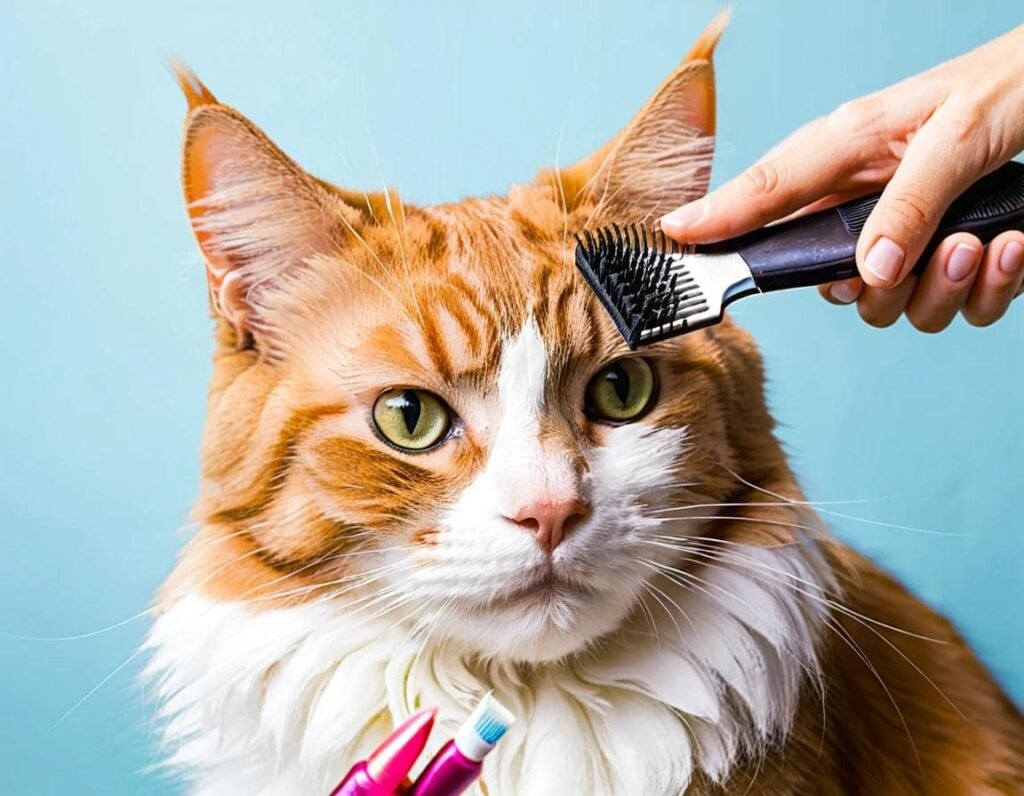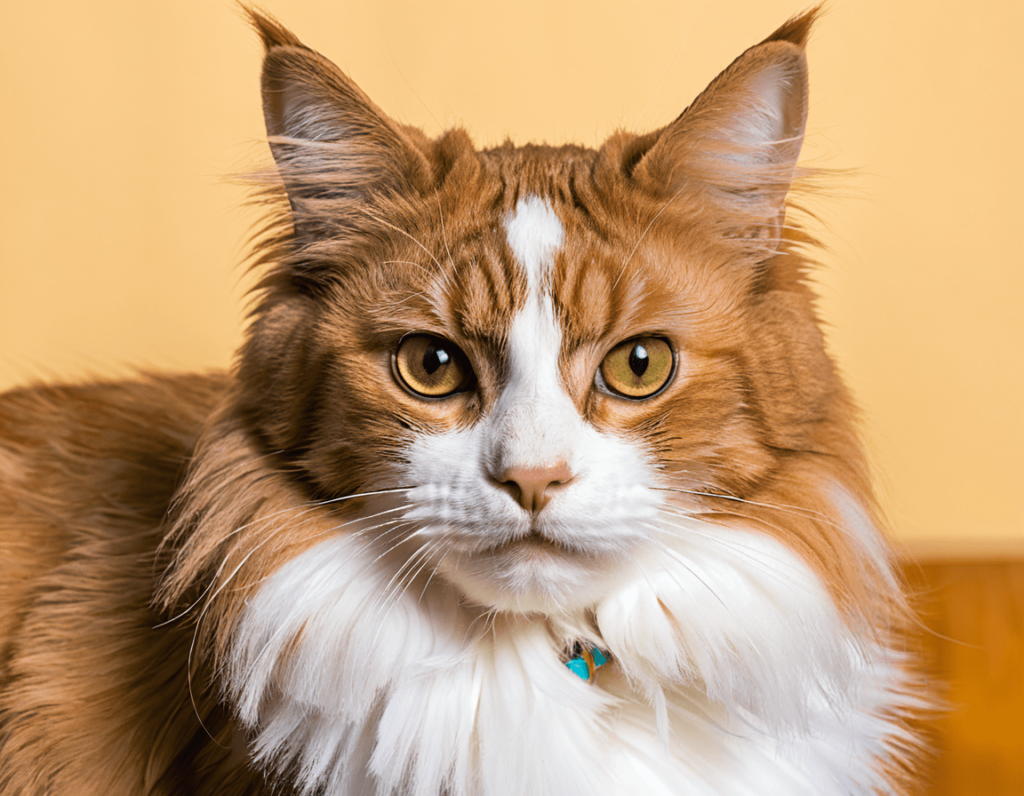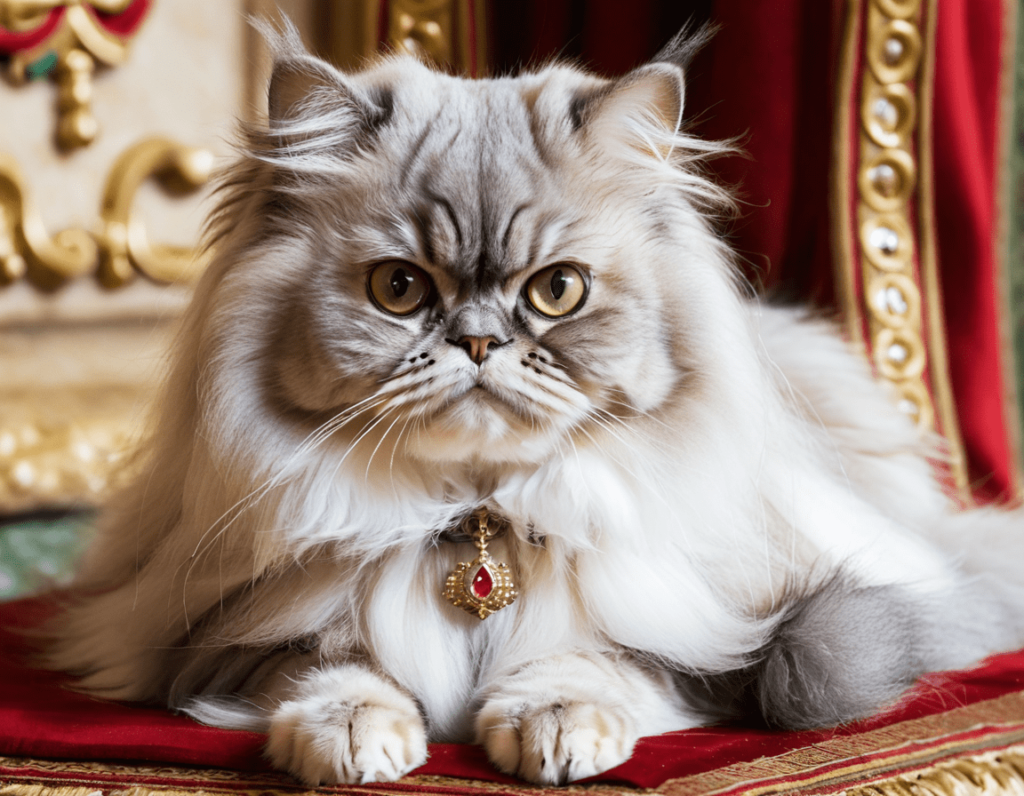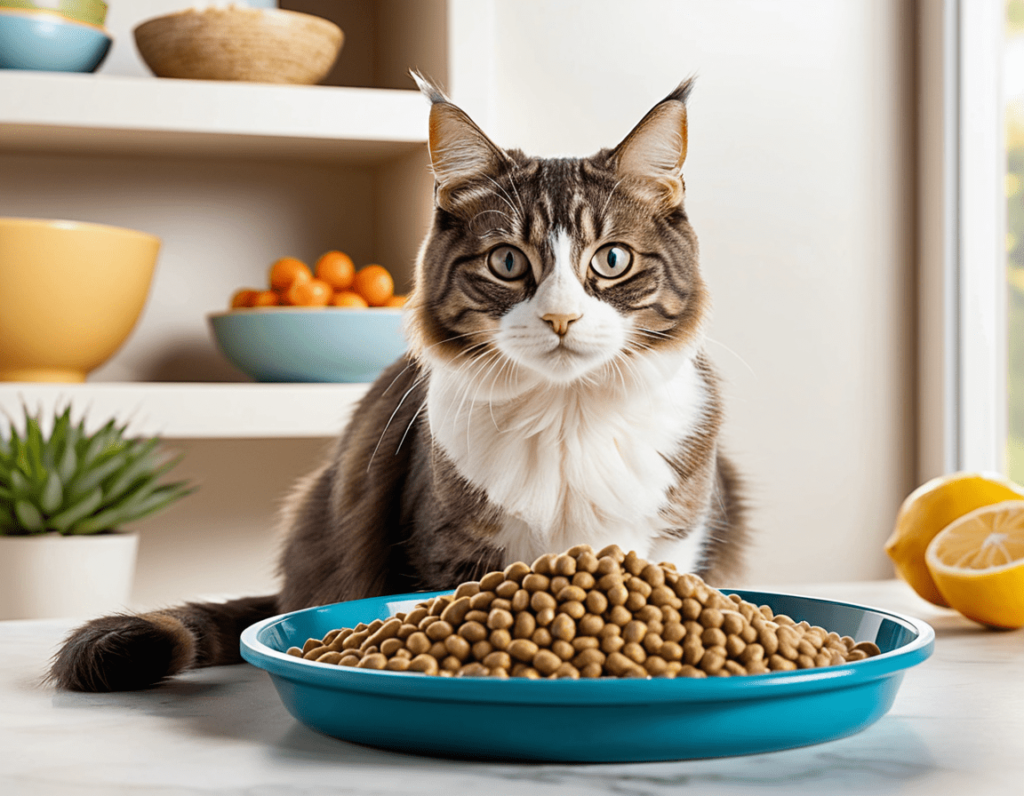
Cat Grooming 101: The Ultimate Guide to Keeping Your Feline Fabulous
Cats are known for their impeccable self-grooming habits, but even the most independent feline friend needs a little help now and then. If you’re a cat owner, you’ve probably found yourself wondering, “How much grooming does my cat really need?” or “What’s the best way to take care of my cat’s coat?” Well, don’t worry—we’ve got you covered. In this article, we’ll walk you through the essentials of cat grooming, from brushing to bathing, and sprinkle in a little humour to make the process more enjoyable for both you and your kitty.
1. Why Groom Your Cat?
You might be thinking, “My cat licks themselves all day; do they really need me to brush them?” While it’s true that cats are pretty diligent when it comes to their grooming, they can’t reach every spot (especially those hard-to-reach places like the back of the neck). Plus, regular grooming can help prevent matting, reduce shedding, and minimise hairballs—because, let’s face it, no one enjoys stepping on a hairball at 3 a.m. in their bare feet.
But most importantly, grooming is a great bonding activity. Plus, you get to admire your cat’s fluffy coat without the risk of getting covered in fur yourself.
Most searched keywords related to cat grooming: “Why groom a cat,” “how often should you groom your cat,” “cat grooming tips.”
2. Brushing: The Kitty Spa Treatment
Brushing your cat isn’t just about preventing mats—it’s a form of feline relaxation. Many cats actually enjoy being brushed, especially if they’re used to it from an early age. Regular brushing helps to remove loose hair, reduces the chances of hairballs, and even helps to distribute natural oils across their coat.
Types of Brushes to Use:
- Slicker Brush: Great for removing tangles and mats, especially in long-haired breeds.
- Pin Brush: Works well for fluffier coats and can help with gentle detangling.
- Bristle Brush: Best for short-haired cats to help distribute oils and keep their coat shiny.
It’s a good idea to brush your cat every few days, depending on their coat length. Long-haired cats may need more frequent brushing, while short-haired cats are usually okay with a weekly session.
Funny note: Cats may act like they’re “tolerating” the brush, but the second you stop, they’ll give you that “you can’t stop now, keep going” look. It’s like a mini-spa session they never asked for but secretly love.
Most searched keywords related to cat brushing: “Best brush for long-haired cats,” “how to brush a cat,” “cat brushing tips.”
3. Dealing with Hairballs: More Than Just a Cough
Ah, hairballs. They’re the price we pay for having fluffy, beautiful cats. Cats lick their fur to groom themselves, and in doing so, they swallow loose hair that can sometimes form hairballs. While this is perfectly normal, regular brushing can help reduce the frequency of these hairballs—because nobody wants to find one lurking under the couch.
If your cat seems to be having more hairballs than usual, consider incorporating a hairball remedy into their diet. There are special foods and treats designed to help with digestion, so they don’t have to hack up hairballs all over the house.
Funny line: Hairballs are basically your cat’s way of saying, “I ate too much of myself today.”
Most searched keywords related to hairballs: “How to stop cat hairballs,” “cat hairball remedies,” “why do cats get hairballs.”
4. Bathing: Not as Scary as It Sounds
Cats are typically excellent self-bathers, but there are times when they might need a little extra help. Whether they’ve gotten into something sticky (looking at you, mud puddle) or their coat just feels a little greasy, a bath may be necessary. However, keep in mind that most cats don’t like water, so it’s important to make bath time as stress-free as possible.
How to Bathe Your Cat:
- Use a Cat-Specific Shampoo: Human shampoo can be too harsh on your cat’s sensitive skin, so always use a product designed for felines.
- Prepare the area: A sink or bathtub with a non-slip surface works best. Fill it with lukewarm water—cats hate hot water, just like us!
- Lather Gently: Gently wet your cat’s fur and work the shampoo in. Be careful around their face and ears.
- Rinse Thoroughly: Cats don’t like shampoo residue, so rinse carefully to avoid irritation.
- Dry Your Cat: Towel dry your cat as much as possible. If your cat tolerates it, a hairdryer on a low setting can help finish the job.
Funny note: Don’t be surprised if your cat gives you a look that says, “I will remember this.” But remember, a clean cat is a happy cat!
Most searched keywords related to cat bathing: “How to bathe a cat,” “cat bathing tips,” “best shampoo for cats.”
5. Nail Clipping: A Necessary Evil
Cutting your cat’s nails can be a little intimidating, especially if they’re not used to it. However, regular nail trimming is essential for preventing scratches on your furniture and reducing the risk of their claws becoming too long or ingrown. If you’re not comfortable doing it yourself, you can always ask your vet or a groomer to do it.
How to Clip Your Cat’s Nails:
- Get the Right Tools: Invest in a pair of cat-specific nail clippers.
- Calm Your Cat: Wrap your cat in a towel to help keep them still. You can also try gently massaging their paws to get them used to the feeling.
- Clip the Tip: Only trim the sharp tips of the nails, avoiding the “quick” (the pink part inside the nail). This helps prevent bleeding.
- Reward Your Cat: After the session, offer your cat a treat to show them that nail clipping isn’t all bad.
Funny line: If your cat could talk, they’d probably say, “Why is this torture happening to me?” But trust us, your cat will appreciate the effort in the long run (they just won’t admit it).
Most searched keywords related to cat nail clipping: “How to trim a cat’s nails,” “cat nail trimming guide,” “cat grooming nail care.”
6. Ear Cleaning: Don’t Forget the Ears!
Cats are naturally clean creatures, but sometimes their ears need a little extra TLC. If you notice your cat shaking their head or scratching their ears more than usual, it could be a sign of dirt or infection. Regular ear checks and cleaning can help prevent problems.
To clean your cat’s ears, use a cat-specific ear cleaner (never use Q-tips). Gently wipe the outer part of their ears with a cotton ball. If you see any signs of infection, like redness, discharge, or a bad smell, it’s time for a vet visit.
Funny note: Cats can act like they’re being tortured during ear cleaning, but don’t worry—it’s just their dramatic flair coming through.
Most searched keywords related to cat ear care: “How to clean cat ears,” “ear infections in cats,” “cat ear cleaning tips.”
7. Teeth Cleaning: Don’t Forget Those Pearly Whites
Just like us, cats can suffer from dental problems if their teeth aren’t cared for. While cats don’t typically need to brush their teeth every day (though some would probably appreciate a mini toothbrush), regular teeth cleaning can help prevent bad breath, tartar buildup, and more serious issues like gum disease.
To clean your cat’s teeth:
- Start Slowly: Introduce your cat to the idea of teeth cleaning gently. Start by letting them sniff and lick the toothpaste.
- Use Cat-Specific Toothpaste: Never use human toothpaste, as it contains fluoride, which can be toxic to cats.
- Brush Gently: Use a soft toothbrush and gently brush the outside of your cat’s teeth. The goal is to reduce plaque and tartar buildup without stressing your cat out.
- Dental Treats and Toys: If brushing isn’t your cat’s thing, try dental treats or toys designed to help clean their teeth.
Funny line: If your cat could say something during teeth cleaning, it would probably be, “You think I’m gonna let you put that thing in my mouth?” But, like all things, they’ll get used to it (or at least tolerate it).
Most searched keywords related to cat teeth care: “How to clean cat teeth,” “best dental treats for cats,” “cat dental health.”
8. Regular Vet Check-ups: The Secret to a Happy, Healthy Cat
No grooming routine is complete without regular vet visits. Even if your cat is a healthy and self-sufficient grooming machine, routine check-ups are essential for monitoring things like weight, overall health, and any potential issues you might not notice at home.
A professional vet check-up can help catch any skin infections, dental issues, or ear problems early on. Plus, it’s always a good idea to get your cat vaccinated and ensure they’re up to date on flea and tick prevention.
Funny note: If your cat could schedule their own vet appointment, they’d probably leave it until the very last minute. But we all know how important it is to stay on top of their health, even if they don’t always appreciate the trip.
Most searched keywords related to cat vet care: “How often should I take my cat to the vet,” “cat health check-up,” “cat preventive care.”

Final Thoughts: Grooming Your Cat with Love (and Patience!)
Grooming your cat doesn’t have to be a stressful experience—for either you or your feline companion. With the right approach, a few essential tools, and a little humour (because, let’s face it, cats can be dramatic), grooming time can be a fun bonding experience that helps keep your cat feeling fabulous. Plus, you’ll save yourself from dealing with surprise hairballs, nails in your sofa, and the occasional bath-time drama.
So, whether your cat is a pampered princess or a self-sufficient fluffball, remember: regular grooming is key to their well-being. Happy grooming, and may the fur never fly too far!
Most searched keywords related to cat grooming: “Cat grooming checklist,” “How to groom a cat properly,” “Best tools for grooming your cat.”
Conclusion: Your Cat’s Grooming Routine Made Easy
Regular grooming is an essential part of keeping your cat happy, healthy, and looking fabulous. Whether you’re brushing their coat, clipping their nails, or giving them the occasional bath, your cat will appreciate the extra care (even if they don’t always show it). With the right tools and a little patience, grooming can be a great bonding experience for both you and your feline friend. So, go ahead—give your cat the pampering they deserve!
Most searched keywords related to cat grooming: “Complete guide to cat grooming,” “how to groom a cat at home,” “cat grooming tips and tricks.”
FAQs About Cat Grooming: Everything You Need to Know
Grooming your cat is an essential part of being a responsible pet owner, but it can sometimes raise a few questions. Whether you’re dealing with a long-haired beauty or a sleek short-haired kitty, grooming is crucial for their health and comfort. Below are some frequently asked questions to help you understand the ins and outs of cat grooming, with a little humour sprinkled in!
1. How often should I groom my cat?
Answer: The frequency of grooming depends on your cat’s breed and coat length. Long-haired cats (like Persians or Maine Coons) should be brushed daily to prevent mats and tangles. Short-haired cats, on the other hand, usually only need grooming once a week. However, if your cat sheds a lot, you might want to increase brushing sessions to avoid your house looking like a fur factory.
Funny note: If your cat looks at the brush like it’s an enemy, you’ll need to work up to daily grooming. But, don’t worry, after a few sessions, they’ll realise it’s not so bad (or at least they’ll pretend it’s not).
2. Why is my cat shedding so much?
Answer: Shedding is a normal part of a cat’s life, especially during seasonal changes when they “blow their coat.” If your cat seems to be shedding excessively year-round, it could be due to factors like stress, poor diet, or even a medical condition. Regular brushing helps manage shedding and can prevent hairballs, but if the shedding seems abnormal, a vet check-up might be in order.
Funny line: If your cat’s shedding is out of control, you might need to invest in a full-body lint roller or consider opening a fur-based fashion line!
3. What tools do I need to groom my cat?
Answer: The tools you need depend on your cat’s coat. Some basics include:
- Slicker Brush: Perfect for long-haired cats to remove tangles and mats.
- Pin Brush: Works well for longer fur or fluffier coats.
- Bristle Brush: Ideal for short-haired cats to help distribute natural oils and keep their coat shiny.
- Nail Clippers: Special cat nail clippers or guillotine-style clippers are designed for feline paws.
- Ear Cleaner: Keep those ears nice and tidy with a safe cat ear cleaner.
- Cat Shampoo (optional): For those rare bath times.
Funny note: You can tell your cat’s thoughts on grooming tools by how they react to the sound of the brush coming out. It’s like their internal alarm goes off: “Uh-oh, here comes the spa treatment!”
4. How can I make grooming less stressful for my cat?
Answer: If your cat is not a fan of grooming, try to make the experience as calm and enjoyable as possible.
- Start grooming sessions when your cat is relaxed, perhaps after playtime or a nap.
- Use treats and positive reinforcement to reward good behaviour.
- Keep grooming sessions short to avoid overwhelming your cat. You can gradually increase the time as they get more comfortable.
- Never force it—if your cat seems too stressed, take a break and try again later.
Funny note: If your cat acts like they’re being held hostage, try playing some soothing music. They may not appreciate it, but at least you’ll have the soundtrack to your grooming struggles.

5. Do I really need to bathe my cat?
Answer: Most cats are self-cleaning and do not need regular baths. However, if your cat has gotten into something sticky or smelly (like mud or something more unpleasant), a bath might be necessary. Make sure to use a cat-friendly shampoo, as human shampoo can be too harsh for their skin. If your cat hates baths, try using waterless cat shampoo or wipes as a less stressful alternative.
Funny note: Cats might look at you like you’re a monster when you mention “bath time,” but a little patience and some treats afterward will go a long way.
6. How do I trim my cat’s nails without getting scratched?
Answer: Trimming your cat’s nails can be tricky, especially if your cat is sensitive about having their paws touched. Here are a few tips:
- Get a pair of cat-specific nail clippers.
- Gently hold your cat’s paw and press the pad to expose the nail.
- Trim just the sharp tip, avoiding the “quick” (the pink part inside the nail).
- Use positive reinforcement and treats to reward your cat for being calm.
Funny line: If your cat could talk, they’d probably say, “I’m not mad, just disappointed you’re touching my paws!”
7. How do I clean my cat’s ears?
Answer: Cats can develop ear infections or have wax buildup, so it’s important to clean their ears occasionally. Use a cat-safe ear cleaner and a soft cotton ball. Gently wipe the outer ear canal, but avoid sticking anything inside the ear. If your cat’s ears are red, smelly, or your cat is scratching them a lot, it’s best to consult a vet.
Funny note: Cats act like they’ve just been sentenced to life in “ear prison” when you try to clean their ears. A little bit of patience and praise will help them survive the ordeal.
8. Can I groom my cat if they have sensitive skin?
Answer: If your cat has sensitive skin, grooming can still be done, but you’ll need to be extra gentle. Use a soft brush and be careful not to scratch their skin. Also, avoid harsh grooming products like strong-scented shampoos or harsh chemicals. If your cat’s skin seems irritated or inflamed, consult your vet for recommendations on gentle grooming options.
Funny line: Sensitive skin? Your cat might give you the side-eye, but as long as you treat them like royalty, they’ll forgive you in time (with a little extra petting).
9. Should I clean my cat’s teeth?
Answer: Yes! Dental hygiene is important for your cat’s health. You can use a cat-specific toothbrush and toothpaste to clean their teeth, but be sure to start slowly. Some cats may prefer dental treats or toys if brushing isn’t their thing. Regular cleaning can help prevent plaque, tartar, and gum disease.
Funny note: If your cat had a choice, they’d probably tell you, “Just let me chew on your shoes instead!”


